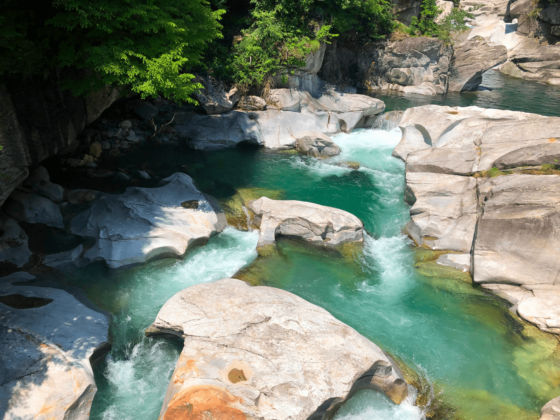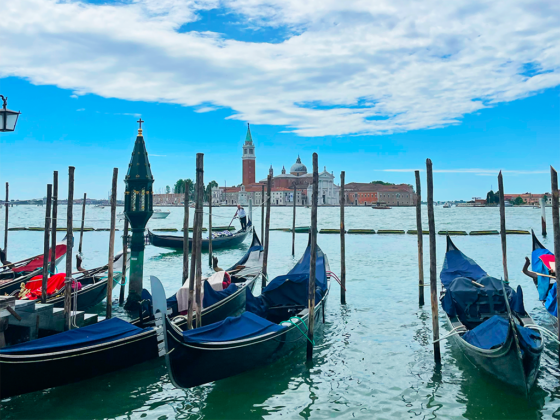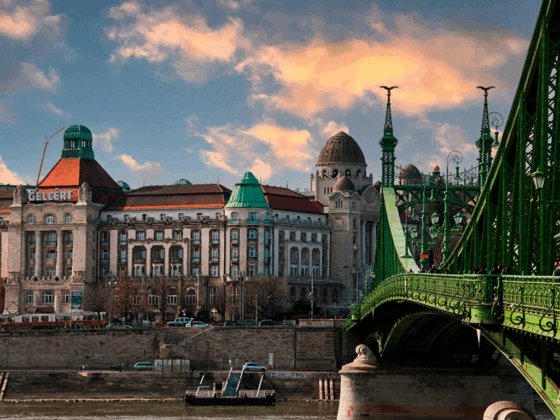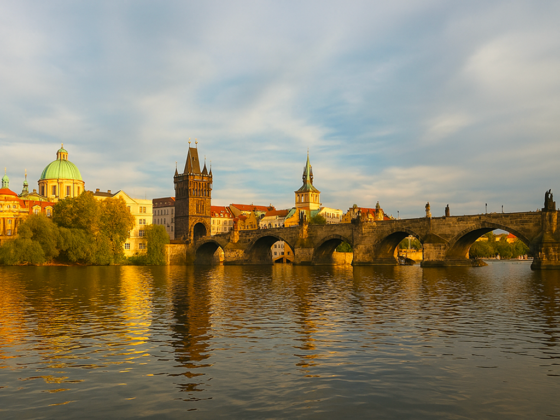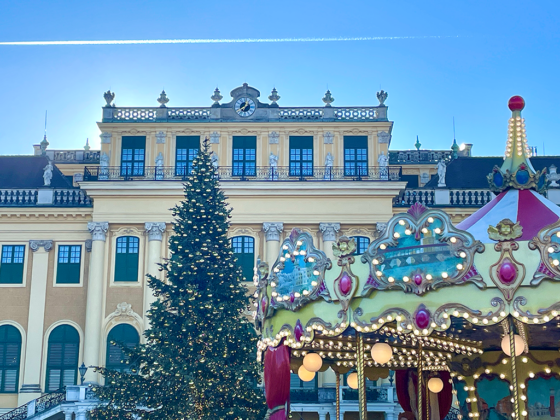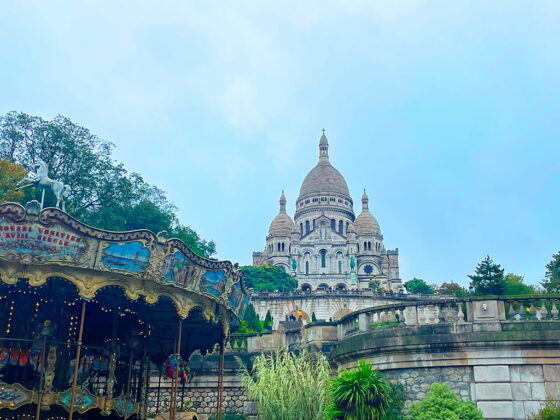Copenhagen is a city that has always fascinated me, perhaps because despite the very (too?) cold climate it has always conveyed warmth and welcome. Modern and historical at the same time, it is the essence of Scandinavian style, it is a palette of colours, it is rich in historical buildings and design. It is certainly a city on a human scale, as we like it, and you can visit it easily on foot in a long weekend.
Here is our four-day itinerary between Copenhagen and Malmö.
Map
Day 1: Tivoli Gardens, Strøget and TorvehallerneKBH
We begin our first day with a visit to Tivoli Gardens. Opened on 15 August 1843, it is the second oldest amusement park to survive intact to this day. When Tivoli was built, it was located outside the city’s western gate, but today the Town Hall Square is only a few minutes’ walk away and the Central Station is across the street, so it is very easy to reach.
Tivoli manages to combine exotic architecture with historical buildings and is rich in lush gardens. The attractions, so different from each other, fit perfectly into this parallel fantasy world. Some are spectacularly nostalgic like the park’s oldest carousel, the 1914 wooden roller coaster, one of only seven roller coasters in the world where there is still a person on board who manually brakes. Others are super modern and pure adrenaline moments like the Vertigo, which reaches speeds of 100 km/h and I can assure you gives even the most fearless a run for their money. These days it is decked out in a Halloween theme, which makes the experience even more magical and exhilarating. Needless to say, Paolino and I become children again and let ourselves be carried away by the wonder of the place and its atmosphere!
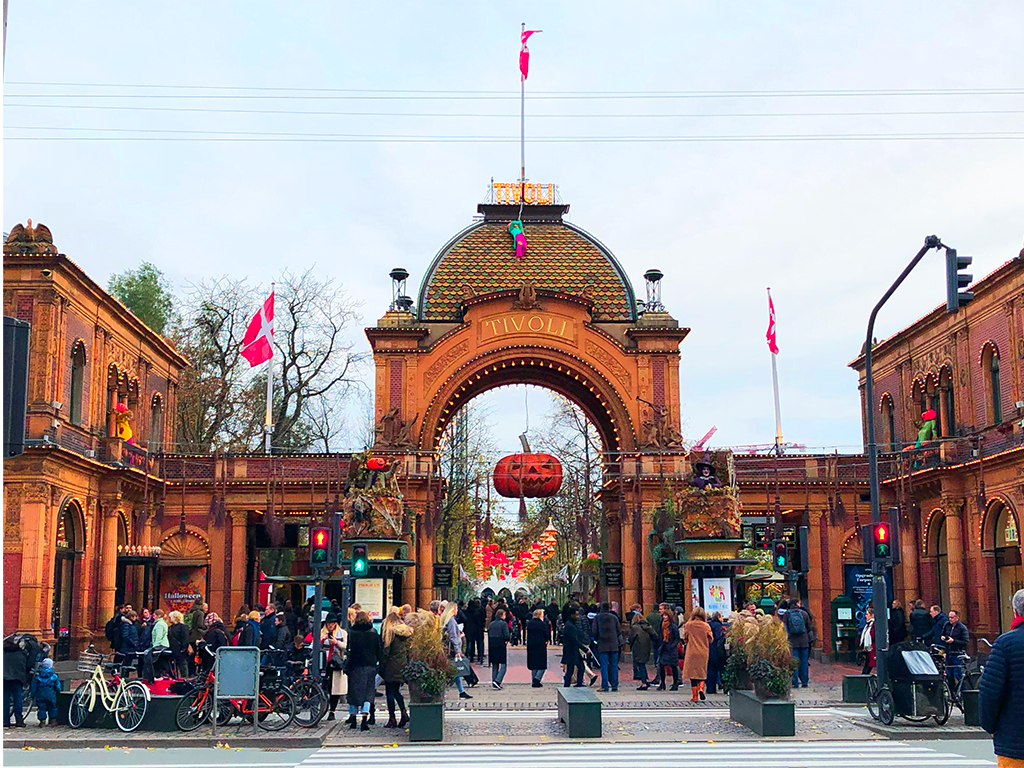
We leave the park happy and smooth and head into the city centre. We cross Rådhusplads, where Copenhagen City Hall is located – we will return here in the next few days for a visit inside and to the tower – and from here we take the Strøget, a pedestrian island in the heart of Copenhagen. It is a succession of several streets that make up the longest pedestrian street in Europe. At the other end is Kongens Nytorv and in the middle an infinity of shops – only a few are typical Danish (especially design shops), while the majority are the big international fashion brands – numerous bars and restaurants.
We end the day at TorvehallerneKBH, Copenhagen’s largest covered food market. Opened only in 2011, it consists of two pavilions and a large open-air area with all kinds of stalls and shops. It offers a wide range of fresh local foods including herbs, smoked meats, fish, cheeses and coffee. Like all markets, it has a quaint and colourful ambience, full of life though very modern and uncluttered. On Fridays it stays open until 8pm, so after a nice tour of all the stalls we sit at the counter and nibble on some good wine to round off a wonderful first day!
Day 2: Rosenborg Castle, Kastellet Fortress, The Little Mermaids and Nyhavn
Day two begins with a visit to Rosenborg Castle in Copenhagen’s green lung. A real fairy-tale castle with moats, drawbridges and lots of greenery, it is immediately striking for the contrast between the walls made of red bricks and the green copper roof, towers and spires.
The castle was built between 1606 and 1624 as a royal residence at the behest of King Christian IV of Denmark. After the reign of Frederick IV of Denmark, the castle was only used as a royal family residence on two other occasions, both of which were extraordinary emergencies. The first time was in 1794 when Christiansborg Palace burnt down, and the second during the Battle of Copenhagen in 1801. Since 1833, the Castle and King’s Gardens have been open to the public. The Danish Royal Household has turned the palace into a large museum housing the Crown Jewels and treasures spanning four hundred years, from 1500 to 1900. The interiors are, in our opinion, the most striking part for the stunningly beautiful rooms: rooms with frescoed ceilings and furnished with period furniture, valuable art collections of the Royal House and impressive dungeons where the Crown Jewels are kept.
Around the castle, the Royal Gardens, or Kongens Have, built in the 17th century at the behest of Christian IV, are worth a visit. These gardens represent the oldest park in Denmark. A vegetable garden was also created in them, which served to supply the castle court. The park contains several statues of well-known figures, kings and queens, including one of the famous Danish writer Hans Andersen.
We then reach the Kastellet Fortress. Also called ‘the Citadel’, it is an ancient military fortification, star-shaped with ramparts at the corners and surrounded by the waters of a moat. The Citadel has two main entrances to enter through: the King’s Gate on the south side, facing the city, and the Norway Gate – the one we choose to enter through – on the north side of the fortification, both dating back to 1663 as part of the original citadel. They are built in the Dutch Baroque style and are on the inner side flanked by guardhouses. The interior is made up of neat little red houses with sloping roofs. The main reason for our visit is the world-famous Windmill located at the south-western corner of the citadel. It dates back to 1817 and is the only mill still standing. By 1800, in fact, as many as 16 mills had been built on the ramparts to ensure safe supplies of food to the walled city.
Finally, on our way out of the Kings Gate we admire the Gefjon Fountain, depicting the legend of the birth of Zeeland, the island on which Copenhagen is located. Legend has it that Gefjun asked the King of Sweden for land and he promised her a kingdom as big as the one she would manage to plough in one night; she turned her children into oxen and dug up a huge amount of earth, which was poured into the sea, creating Zeeland. The statue in the fountain represents Gefjun urging her children turned into oxen to work. Next to the fountain stands the majestic St Alban’s Church, in neo-Gothic style.
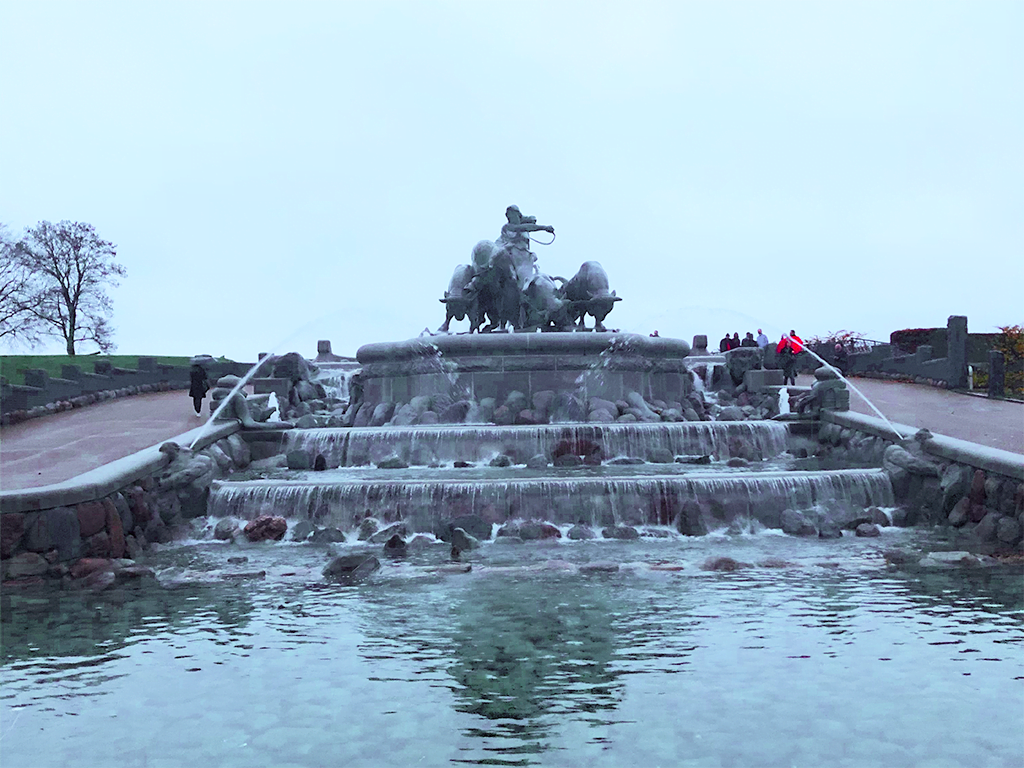
Next stop is the city’s undisputed symbol, the world-famous Little Mermaid of Copenhagen. For the uninitiated, it is a bronze statue by Edvard Eriksen inspired by the protagonist of the Danish writer Hans Christian Andersen’s fairy tale of the same name. It was commissioned in 1909 by Carl Jacobsen, the son of the founder of Carlsberg, who had been fascinated by a ballet at the Royal Theatre in Copenhagen, which featured the Little Mermaid fairy tale on stage. The sculpture is located on a rock on the Langelinie waterfront at the entrance to Copenhagen harbour. Looking out to sea, the Little Mermaid scans the horizon, waiting for the hopeful arrival of her Prince Charming.
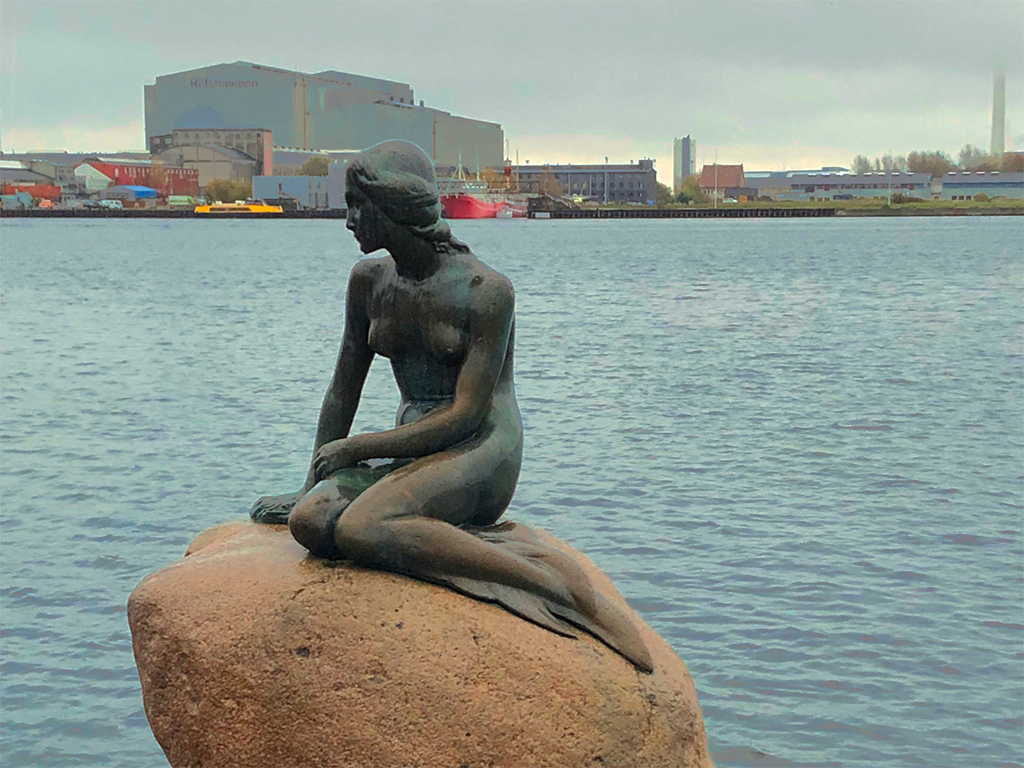
However, we would also like to spend some time with its less famous but equally beautiful sister, the Genetically Modified Little Mermaid. This is a work by artist Bjørn Nørgaard, created for the Danish pavilion at the World Expo in Hanover in 2000. In 2006, however, it was decided to place it on a small island at the water’s edge in a new square next to one of Copenhagen’s old harbour warehouses, ‘Dahlerups Pakhus’. It is part of a group of sculptures called ‘The Genetically Modified Paradise’.
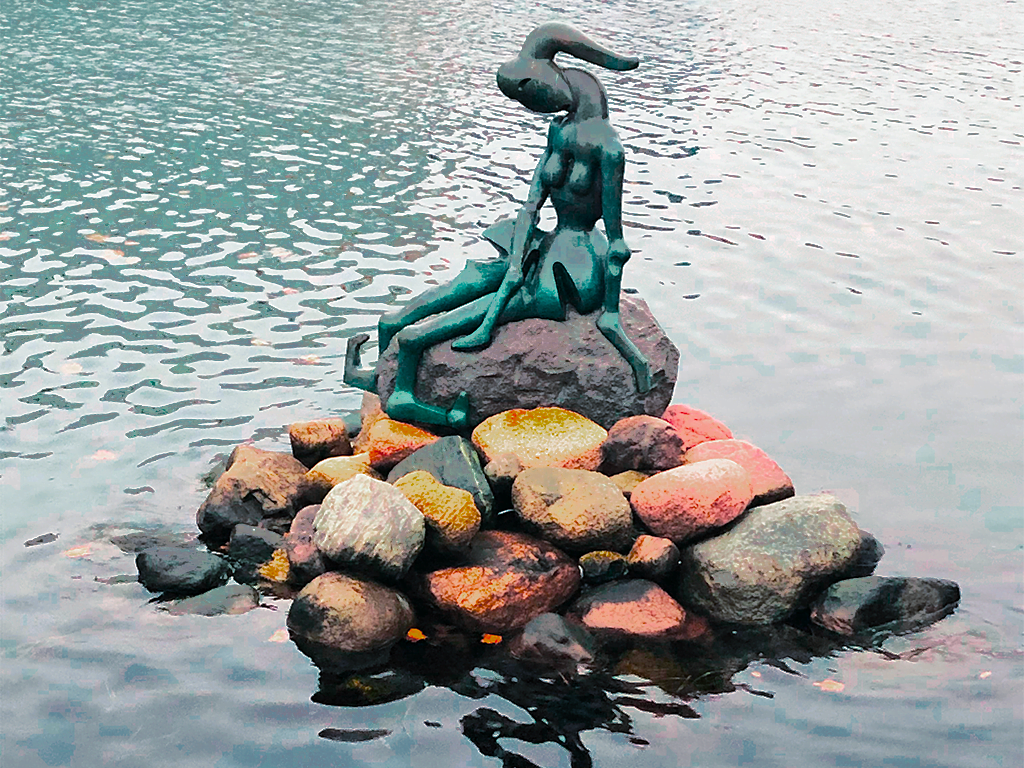
This second day has also come to an end and we head for Nyhavn, Copenhagen’s ancient harbour. Central point of the city’s tourism, it is animated already in the afternoon by the lights of cafés and bars of all kinds and warmed by the warmth of the mushrooms on their terraces. We stop for a warm drink and, thanks to the dim candlelight, the smell of cinnamon, a little gløgg (the local mulled wine) and some sweet music in the background, we discover and become familiar withHygge, a feeling much loved by the Danes.
Day 3: Malmö
One of Copenhagen’s most interesting attractions is the Øresund Bridge, which plunges from the Danish capital into the Baltic Sea and reaches the shores of Sweden. This masterpiece of engineering crosses the water and connects Copenhagen to Malmö in about an hour.
We then devote a day to visiting Malmö, located in the far south of Sweden, the nation’s third largest and most populous city. The city’s characteristic feature is the perfect harmony between the past and modernity.
Arriving at the train station, we head to Malmö Castle, located in the green lung of the city and surrounded by the water of the moat. The building has a long history and has undergone several changes over the years. It was built in 1434 at the behest of King Eric of Pomerania. It was later demolished and rebuilt by King Christian II of Denmark, who made it his royal residence. In 1658 it was turned first into a fortress and then into a prison. It was rebuilt again in the first 30 years of the 20th century in the original Renaissance style. Today, the building houses the city’s most important museums: the Art Museum which houses the rich collection of Swedish and Nordic art with works from the 16th century to the present day; the Municipal Museum dedicated to the history of the city; the Natural History Museum dedicated mainly to the animal kingdom; and the Maritime and Technology Museum.
Around the castle, the Slottsparken and Kungsparken are worth a visit, where you can walk and spend a few hours in contact with nature and animals, swans and ducks are at home. Slottsparken, ‘the castle park’, is characterised by old trees, ponds, fountains and various sculptures. Kungsparken, ‘the king’s park’, is the oldest in the city and is characterised by rare exotic trees, a windmill and the inevitable ponds and streams. Bordering this park is the City Library, a modern, completely glass-clad structure overlooking the adjacent park, an ideal place for relaxing reading.
We move on to the nearby district of Möllevångstorget, one of the most characteristic and colourful in Malmö. Here, the buildings have remained largely intact since the beginning of the 20th century and have a remarkably linear architecture. The central square is occupied by a bustling city market selling all kinds of products. In the narrow streets around there are numerous bars, cafés and multi-ethnic restaurants, where you can sample all the cuisines of the world. We don’t miss a stop at Folkets Park, the oldest city park, dating back to the late 19th century. It began as an attraction for the working class, but following extensive renovation, it has become one of the busiest areas and packed with summer cultural events. Within the park there are also numerous attractions for children such as a funfair, a theatre, a petting zoo and the classic pony ride.
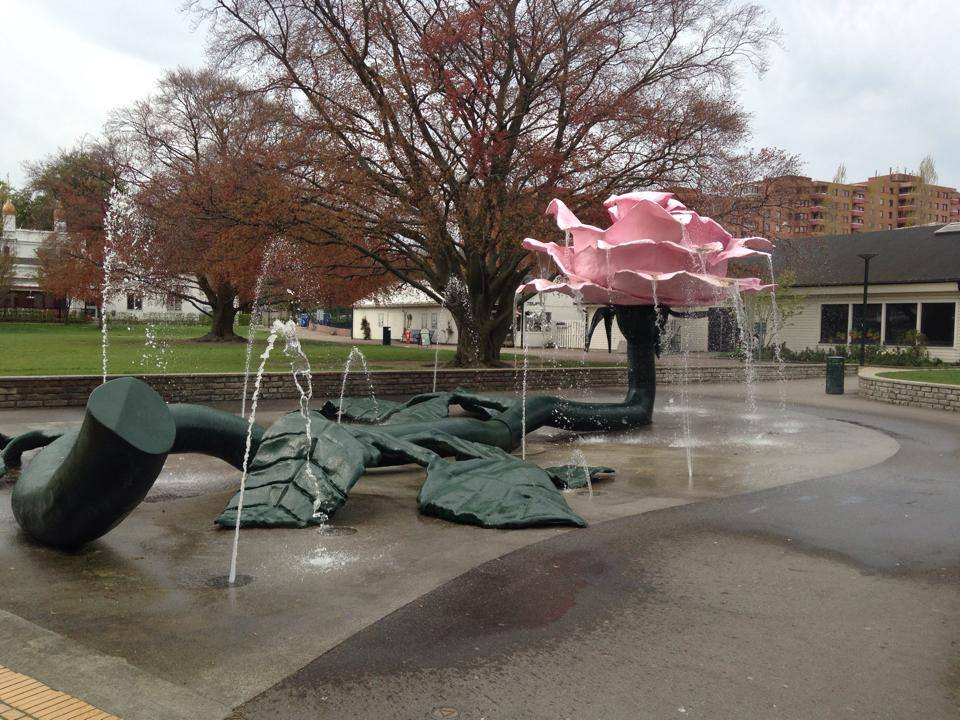
We return to the centre and visit the medieval heart of the city, Gamla Staden. We start at Gustav Adolfs torg, built in the 19th century. Surrounded by trees, it is the perfect place for a rest where you can enjoy classic Swedish dishes on a bench and buy them from the many kiosks that fill the square. Numerous events and the well-known Christmas markets are held here.
We walk along Sodergatam (the shopping street) and arrive at Stortoget, Malmö’s largest and oldest square. It was built in 1536 and houses one of the city’s most beautiful buildings, the City Hall. The building was built in 1546 in Gothic style and then renovated in 1800 in the Renaissance style.
Turning right onto the small street of Kyrkogatan, we come to the majestic St Peter’s Church, the oldest monument in the city. Its construction dates back to 1319 and is in the Baltic Gothic style. Its simple red-brick façade and 105-metre tower are its distinguishing features. Inside, the church is very simple and devoid of any decorative elements, only the Merchants’ Chapel still has its former frescoes. The pulpit, baptismal font and Baroque altarpiece are the only rich elements of this Lutheran church.
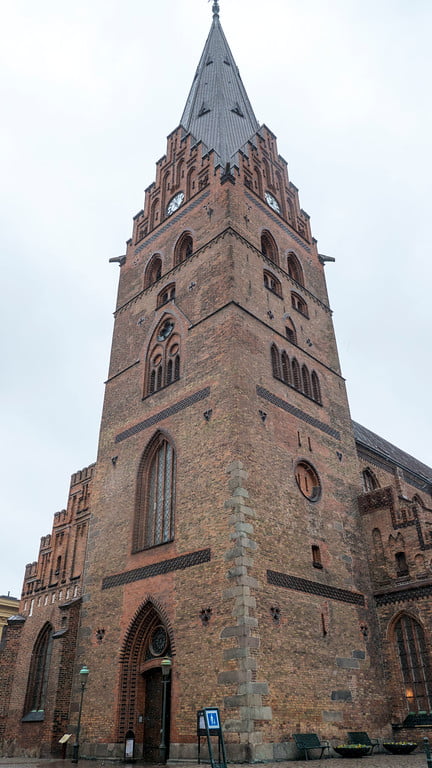
We end our tour at Lilla Torg, the smallest and most characteristic square in the city. Built towards the end of the 16th century, it is characterised by its medieval red and coloured brick houses with ornate facades, sloping roofs and cobblestone streets. Lilla Torg is also the hub of the city’s nightlife. We enjoy an aperitif in the warmth of a mushroom and illuminated by the Giant Lamp that lights up Lilla Torg from nightfall.
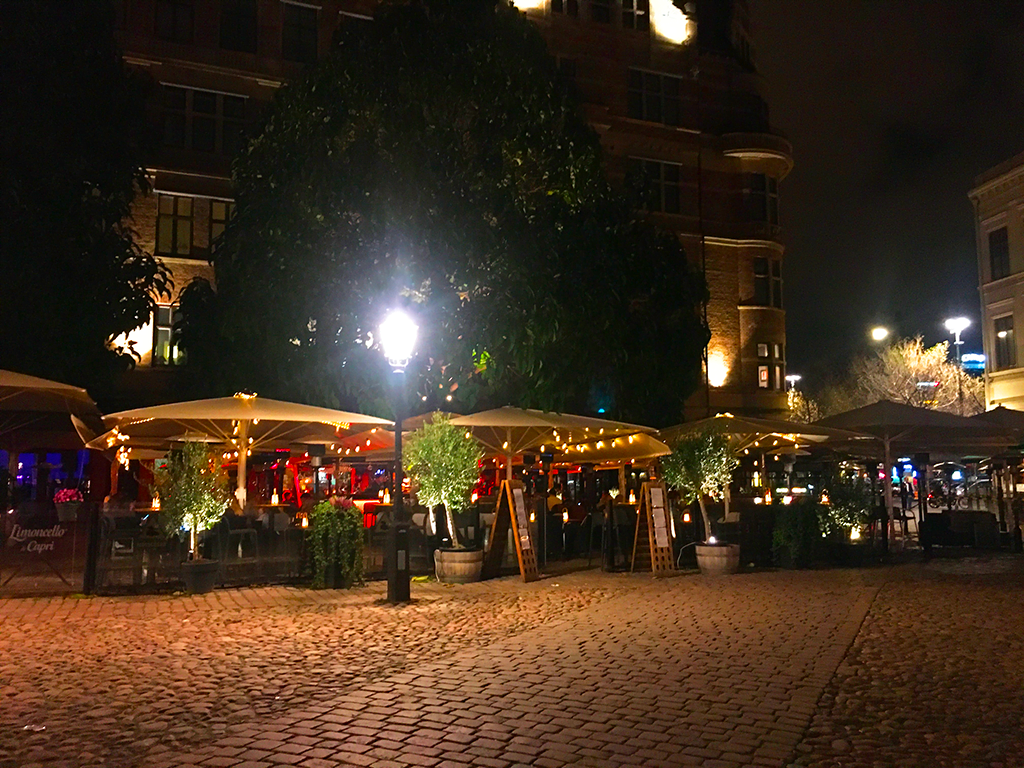
Day 4: Christiansborg Palace, Copenhagen City Hall, Vor Frelsers Kirke and Christiania
Our last day in Copenhagen begins with a visit to Christiansborg Palace, Copenhagen’s royal palace, home to the three powers of Denmark: the Parliament, the offices of the Minister of State and the Supreme Court. It is the only palace in the world to have the three state bodies in it at the same time. Parts of the palace are used by the royal family, including the state rooms, the royal chapel and the royal stables. Our tour begins with the original Marble Bridge, dating back to 1745. We continue to the Christiansborg Ridebane (Riding School Complex) also in the Baroque style of the original palace. We then enter the Christiansborg Slot through the main entrance and climb to the top of the tower. We move on to the Royal Library Gardens through an arch in front of the south side of Christiansborg Slot. In the centre of the garden is a magnificent fountain created as a hymn to the written word. Finally, to the south of the garden is the Det Kongelige Bibliotek and the famous Black Diamond, a 1999 library extension clad in black granite (perhaps a little too strong a juxtaposition for me).
After a quick lunch, we return to the centre, specifically to the Rådhusplads, where Copenhagen City Hall is located. Copenhagen City Hall was built between 1892 and 1905 and was designed by architect Martin Nyrop in the National Romantic style. Today, the City Hall is used for Civic Council meetings, weddings and national celebrations. Also housed inside isJen Olsen’s World Clock, which in addition to local time shows solar time, sidereal time, the time when the sun rises and sets, the migration of the celestial poles and stars, the revolutions of the planets, the Gregorian calendar and even variable date holidays. We decide to take a guided tour of the interior and the City Hall Tower, which at 105.6 metres is one of the tallest buildings in Copenhagen. To reach it you have to climb more than 300 steps and there are no lifts (what can I tell you, I can’t miss that either!).
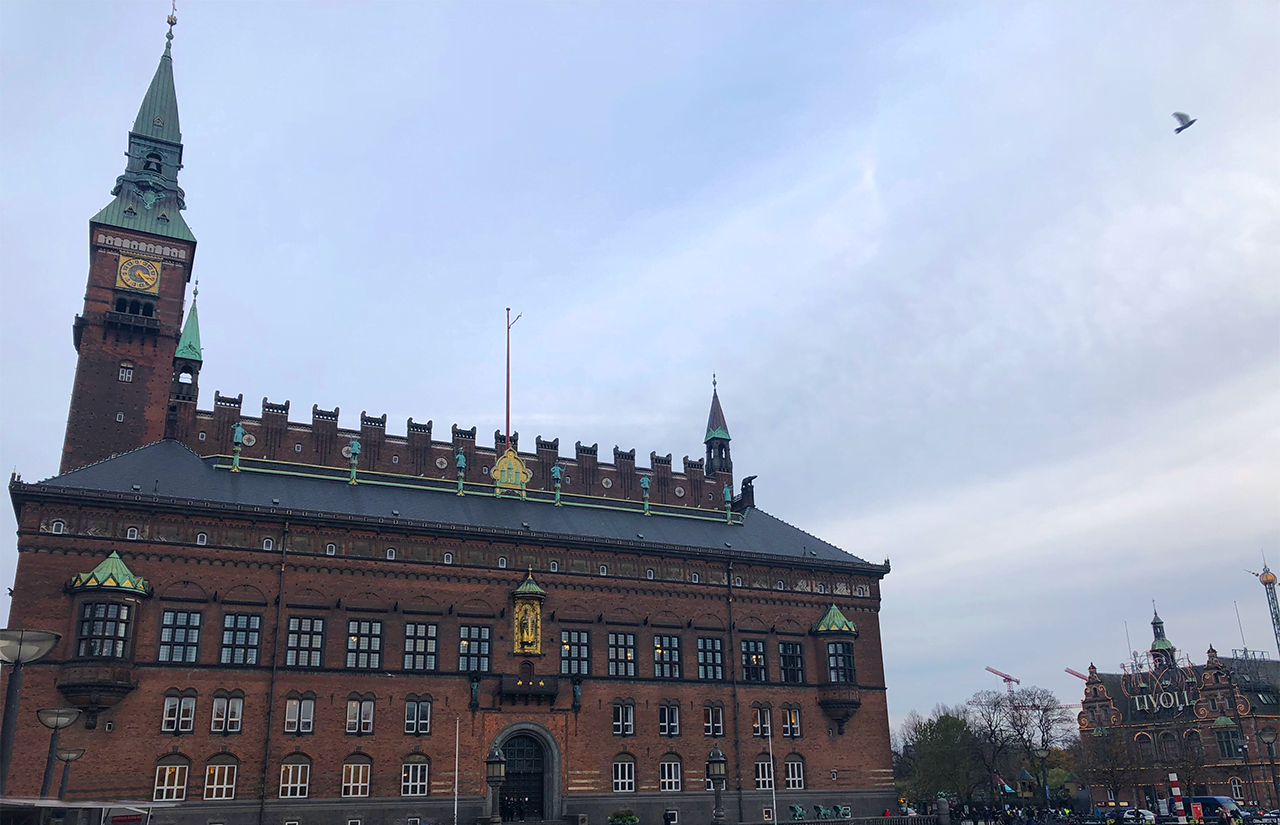
We move on to Christianshavn, a district that is characteristic for its canals and its unconventional, artistic atmosphere. We wander around the alleys for a while and get absorbed in its atmosphere.
We then move on to the Vor Frelsers Kirke, one of the most anticipated stops on the trip. The church dates from the late 1600s and comprises a first block, about 36 metres high, which is completed by a splendid spiral spire that takes the building to a height of 90 metres. The organ inside dates from 1698, is really big and produces a sound audible from a great distance. The carillon consists of 48 bells that cheer those around the church every Saturday at 4pm. The real gem is the splendid Bell Tower spire, with its spiral external staircase and gold detailing. Climbing all 400 steps of the staircase takes you to the top of the bell tower (90 m high), from where there is a breathtaking view. The last 150 steps are more exposed, you are only protected by a golden iron railing. Being built of oak wood on the inside, the spire sways slightly in strong winds.
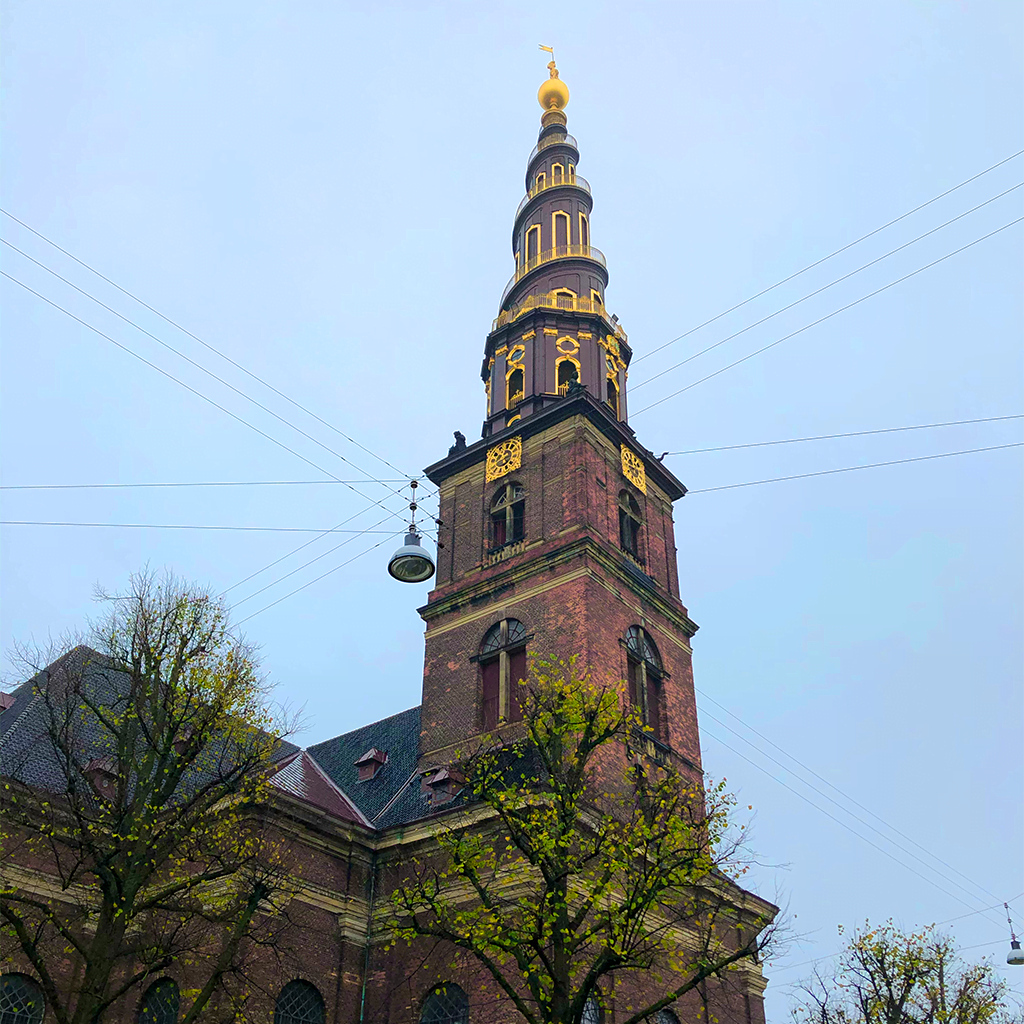
We end the trip on a high note with what is certainly the most anticipated stop. Christiania, also known as the Free City of Christiania, is a self-managed neighbourhood in the city of Copenhagen. A social experiment and utopia, it is based on the principles of respect and free will. It was founded in 1971 by a group of hippies who occupied a disused naval base on the outskirts of the Danish capital, consisting of abandoned military buildings. Inside it is full of craft shops, restoration workshops, bars and restaurants and services for citizens, all of which are totally self-managed. The Danish village has also become famous for its colourful buildings, the famous Pusher Street, the ban on cars and the lack of law enforcement. Christiania remains a fairly safe place to visit as a tourist. In fact, the main rules of the free city prohibit theft, violence, weapons and hard drugs.
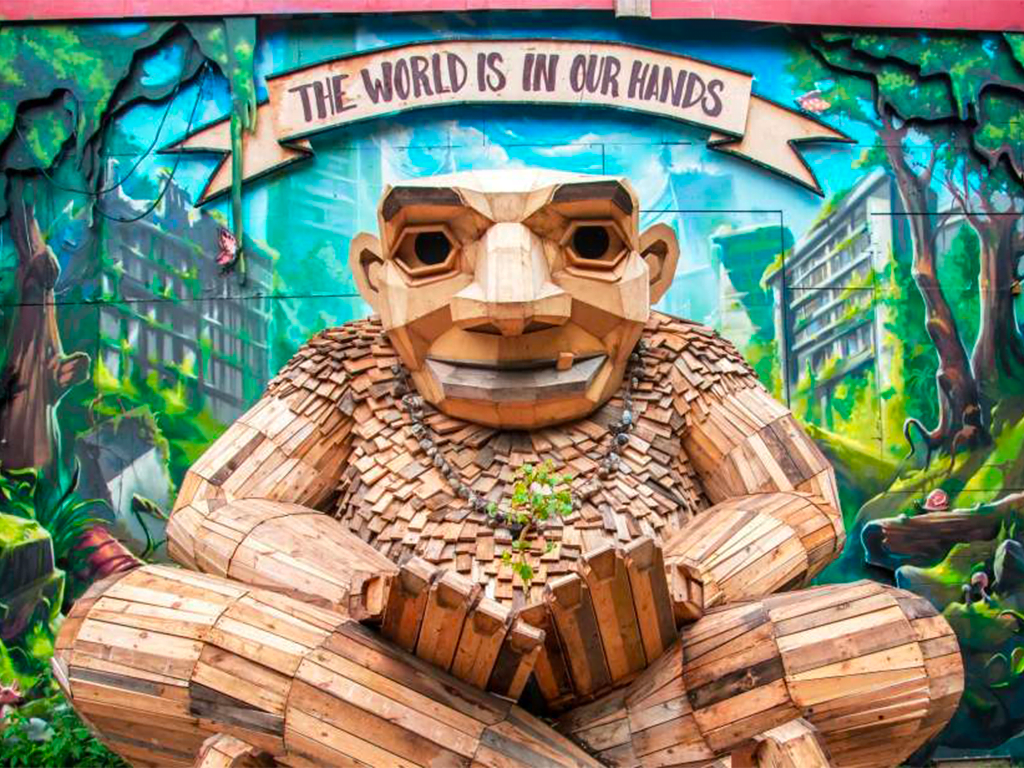
Last modified: 14 June 2025
